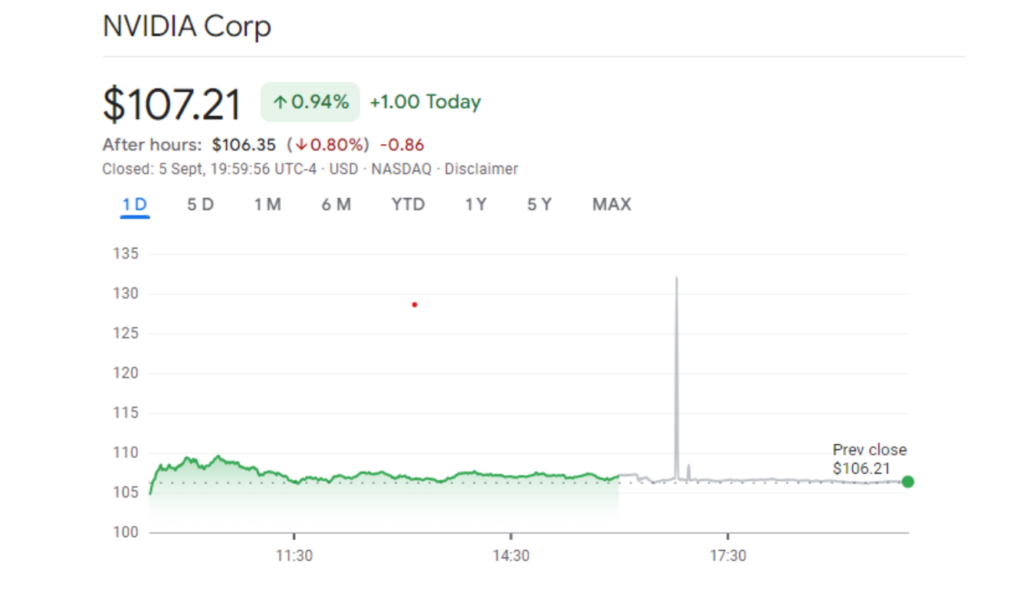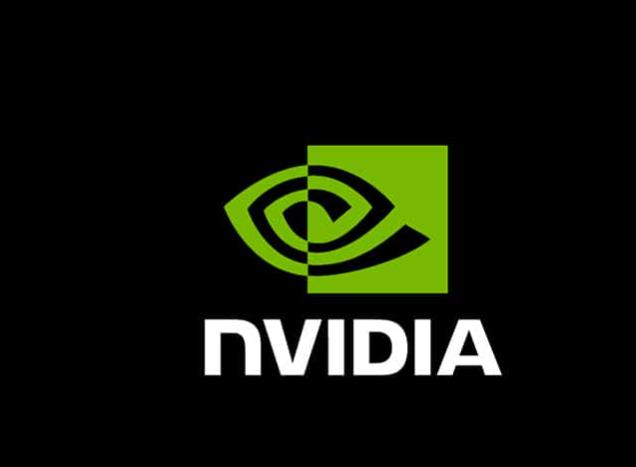Nvidia (NVDA) has been a powerhouse in the technology industry, leading innovations in graphics processing units (GPUs), artificial intelligence (AI), and data center technologies. As the company continues to expand its footprint across various emerging markets, investors are curious about the long-term prospects of Nvidia’s stock. The question on everyone’s mind is: How high can Nvidia’s stock go by 2040 and 2050?
In this blog, we’ll explore the stock forecast for Nvidia by the years 2040 and 2050, based on historical trends and future growth potential. Additionally, we will examine key drivers that could propel Nvidia’s stock to new heights, such as its leadership in AI, autonomous vehicles, and the metaverse.
Nvidia Stock Price History.

Nvidia launched its initial public offering (IPO) on January 22, 1999, at $12 per share. Since then, Nvidia has grown into a global technology giant with a market capitalization of $2.6 trillion as of September 2024. Over the years, Nvidia’s stock has gone through several splits, including a 10-to-1 split in 2024.
The company’s stock has experienced significant growth, especially during the tech boom in recent years. Between 2016 and 2024, Nvidia’s stock skyrocketed by 11,800%, positioning it as one of the most valuable companies in the world. Despite market volatility and challenges such as the dot-com bubble and the COVID-19 pandemic, Nvidia has shown resilience and sustained growth.
As of September 2024, Nvidia’s stock is trading at $108 per share, which has many investors wondering how much higher it can go in the coming decades.
>>> Read also The Ultimate Guide to Crypto Loans Without Collateral: What You Need to Know in 2024
Nvidia Stock Forecast for 2040
Forecasting Nvidia’s stock price for 2040 involves considering various factors, including the company’s historical growth rate, future market conditions, and competitive positioning. Below, we present three different scenarios for Nvidia’s stock price by 2040, based on different growth rates.
1.5% Annual Growth Rate
If Nvidia grows at a conservative rate of 5% per year, which is close to the average global economic growth rate, its stock price could reach around $235 per share by 2040. This would represent more than double the stock’s current price, but it assumes slower growth compared to Nvidia’s historical performance.
2.11.13% Annual Growth (S&P 500 Historical Average Return)
The S&P 500 index has delivered a historical average return of 11.13% per year over the last 50 years. If Nvidia’s stock were to grow at the same rate as the S&P 500, its stock price could reach approximately $604 per share by 2040. This would be a significant increase from its current level, representing strong growth for long-term investors.
3.15.2% Annual Growth (Nasdaq-100 Tech Sector Return)
A more optimistic scenario comes from assuming Nvidia will grow at the same rate as the tech-heavy Nasdaq-100 index, which has returned an average of 15.2% per year since its inception. If Nvidia’s stock achieves this growth rate, it could hit $1,039 per share by 2040, representing nearly a tenfold increase from its current value.
These forecasts illustrate different possibilities for Nvidia’s stock price in 2040. While the exact price will depend on future market conditions, Nvidia’s growth prospects are strong due to its leadership in several emerging technologies.
Nvidia Stock Forecast for 2050
Looking even further ahead to 2050, Nvidia’s stock could experience substantial growth if it continues to dominate key sectors such as AI, autonomous vehicles, and data centers. Here’s how Nvidia’s stock could perform by 2050, based on different growth scenarios:
1. 5% Annual Growth Rate
If Nvidia maintains a 5% annual growth rate, its stock price could reach approximately $384 per share by 2050. While this growth rate is conservative, it would still represent significant appreciation over the next 25 years.
2. 11.13% Annual Growth (S&P 500 Historical Average Return)
If Nvidia grows at the same rate as the S&P 500, its stock price could reach $1,678 per share by 2050. This scenario assumes that Nvidia continues to perform well and capitalizes on growth opportunities in AI, gaming, and other sectors.
3. 15.2% Annual Growth (Nasdaq-100 Tech Sector Return)
In the most optimistic scenario, if Nvidia matches the Nasdaq-100’s historical annual return of 15.2%, its stock could reach $4,277 per share by 2050. This would represent exponential growth for long-term investors who hold Nvidia stock for the next few decades.
Key Catalysts for Nvidia’s Future Growth
Nvidia’s growth over the next several decades will be driven by several key factors. Below, we outline the major growth catalysts that could propel Nvidia’s stock to new heights by 2040 and 2050.
1.Artificial Intelligence (AI)
Nvidia is at the forefront of AI technology, providing the hardware and software that power machine learning and deep learning applications. The company’s GPUs are widely used in industries ranging from healthcare to finance, enabling companies to process large amounts of data and make real-time decisions.
Nvidia’s CUDA architecture and TensorRT software are essential tools for AI development, allowing companies to train large machine-learning models efficiently. As AI becomes more integrated into industries and daily life, Nvidia is well-positioned to capture a significant share of this growing market. AI is expected to be one of the primary growth drivers for Nvidia in the coming decades.
2.Autonomous Vehicles
Nvidia’s Drive platform provides AI and deep learning capabilities for autonomous vehicles, making it a key player in the development of self-driving cars. The company has partnerships with major automakers, including Tesla, Mercedes-Benz, and Toyota, positioning Nvidia to benefit from the growing adoption of autonomous vehicles.
As self-driving cars become more mainstream, Nvidia’s technology will be critical for processing the vast amounts of data generated by these vehicles. This represents a significant growth opportunity for Nvidia, especially as the automotive industry continues to evolve.
Read Also >> Flitpay Exchange Review: Is it a Good Choice for Indian Crypto Traders?
3.Data Centers
Nvidia’s data center business is another major growth driver. The company’s GPUs are widely used in data centers to accelerate AI and machine learning tasks. With the increasing demand for cloud computing and data analytics, Nvidia is well-positioned to capitalize on this trend.
Data centers are expected to play a critical role in the future of AI and big data, and Nvidia’s products are essential for processing large datasets. This growing demand for data center technology could provide Nvidia with substantial revenue growth in the coming decades.
4.The Metaverse
One of the most exciting growth opportunities for Nvidia is its involvement in the development of the metaverse. The metaverse is a virtual world where people can interact with digital environments and other users in real time. Nvidia’s Omniverse platform enables the creation of virtual worlds, making it a key player in the metaverse’s development.
As the metaverse grows, Nvidia stands to benefit from the increasing demand for GPUs and AI technology to power these virtual environments. The metaverse could generate billions of dollars in revenue for Nvidia by 2030 and beyond, making it a crucial growth catalyst for the company.
5.Gaming Industry
Nvidia is a dominant player in the gaming industry, providing GPUs that are widely regarded as the best for gaming. The gaming industry continues to grow rapidly, with the rise of eSports and the increasing popularity of high-performance gaming systems.
As gaming becomes more immersive and graphics-intensive, the demand for Nvidia’s GPUs is expected to rise. In addition, AI and real-time ray tracing will further enhance the gaming experience, boosting demand for Nvidia’s products.
Nvidia Price Prediction for 2025
In the short term, Nvidia’s stock could face some volatility. According to various price prediction algorithms, Nvidia may experience a correction in 2025, with some forecasts predicting a potential drop to $34 per share. This would represent a significant decline from its current price, driven by short-term market challenges and corrections.
However, it’s important to keep in mind that Nvidia’s long-term growth potential remains strong. While short-term fluctuations are possible, Nvidia’s leadership in AI, autonomous vehicles, data centers, and other emerging technologies makes it a solid long-term investment.
The Bottom Line
Nvidia’s stock price forecast for 2040 and 2050 shows significant potential for growth. Whether the company grows at a conservative 5% rate or matches the more aggressive returns of the S&P 500 or Nasdaq-100, Nvidia’s stock is poised for substantial appreciation over the next few decades.
Key growth drivers such as AI, autonomous vehicles, data centers, and the metaverse position Nvidia to maintain its leadership in the tech industry. Investors looking for long-term growth opportunities may find Nvidia to be a compelling option, especially as the company continues to innovate and expand into new markets.
While short-term volatility is always a risk in the stock market, Nvidia’s long-term outlook is bright. By 2040 and 2050, Nvidia’s stock could reach new heights, providing significant returns for patient investors.
Disclaimer
This article is for informational purposes only and should not be considered financial advice. Stock investments carry risks, and past performance does not guarantee future results. Always conduct your own research or consult with a financial advisor before making any investment decisions.
